
Discover the Charm of East São Miguel Island

Our second last day on São Miguel Island promised to be an unforgettable exploration of nature’s wonders and the island’s rich heritage in the east part of the island. With rain showers and bursts of sunshine, we embarked on a day filled with intriguing legends, tea plantations, majestic waterfalls, charming villages and breathtaking viewpoints. So, sit back tight as we made you immerse yourself in the beauty of this magical island through the next sections.
A Rainy Start
Our day began with a cozy breakfast, fresh coffee and bowl of local ananas as usual, while we watched the rainfall outside. Our daily adventure in the east part of São Miguel, the largest island in the Azores archipelago, was no ordinary one. It was a blend of independent exploration and an organized transport by a local guide. We were able to delve deep into the island’s natural wonders while enjoying the comfort and expertise that came with our organized trip.
Tea Tales: The Only and The Oldest Tea Plantation in Europe
Our first stop led us to Cha Gorreana near Porto Formoso, not only the oldest tea plantation in Europe, but also the only one. The guide entertained us with tales of the tea’s importation and its span of over 32 acres of fertile land. Its location in the north of the island benefits from the unique microclimate, with a combination of mild temperatures, ample rainfall, and rich volcanic soil, which create optimal conditions for tea cultivation. Interestingly, in the late 19th century, the owners of Cha Gorreana sought assistance from Chinese experts in tea cultivation and processing techniques. The skilled experts played a significant role in helping Cha Gorreana develop and refine its tea-making methods, ensuring the production of high-quality teas, both black and green.
Cascades and Legends
Journeying through picturesque villages such as Maia and Lomba da Maia, we reveled in the island’s rustic charm. Our spirits soared as we arrived at our first highlight, Cascata dos Caldeiros. The sight was breathtaking—on one side, a small waterfall cascaded into a tranquil river, while on the other, a magnificent, roaring waterfall captivated us. We captured the beauty of the waterfall, the stones artfully stacked in front of the falls enhancing their beauty. Amidst it all, adrenaline-pumping canyoning enthusiasts added to the excitement.
Walking alongside the shore, we soon marveled at the majestic sight of Ilhéus dos Mosteiros, towering rocks standing proud against the backdrop of the city. Despite the foggy weather, their presence was breathtaking, evoking a sense of wonder and grandeur. The rain continued intensifying, but at times it was giving us respite to admire the view.

Cascata dos Caldeiros

viewpoints forever etched in our hearts
Nordeste’s Tranquility
As we ventured further to Nordeste, the rain ceased, and the climate transformed into a mild weather distinct from the rest of the island. In this charming, small village of Nordeste, we marveled at the ornate church and colorful decorations in the city center. Strolling around Nordeste, we discovered a stunning vantage point atop a bridge, offering a beautiful views of the sea. Nordeste may be quaint, but its serene allure left a mark on our hearts.
Breathtaking Viewpoints and Volcanic Landspaces
The journey continued as we stopped at Miradouro da Vista dos Barcos, treating our eyes to a panoramic view of a lighthouse against the backdrop of the vast ocean. A short while later, we found ourselves at Miradouro do Sossego, a tranquil oasis boasting beautiful gardens, inviting BBQ spots, and idyllic resting areas. Despite intermittent fog, the rugged cliffs and the vastness of the Atlantic Ocean enchanted us. We marveled at the cliffs beautiful shapes, savoring the mist on our skin and the scent of the ocean carried by the breeze.
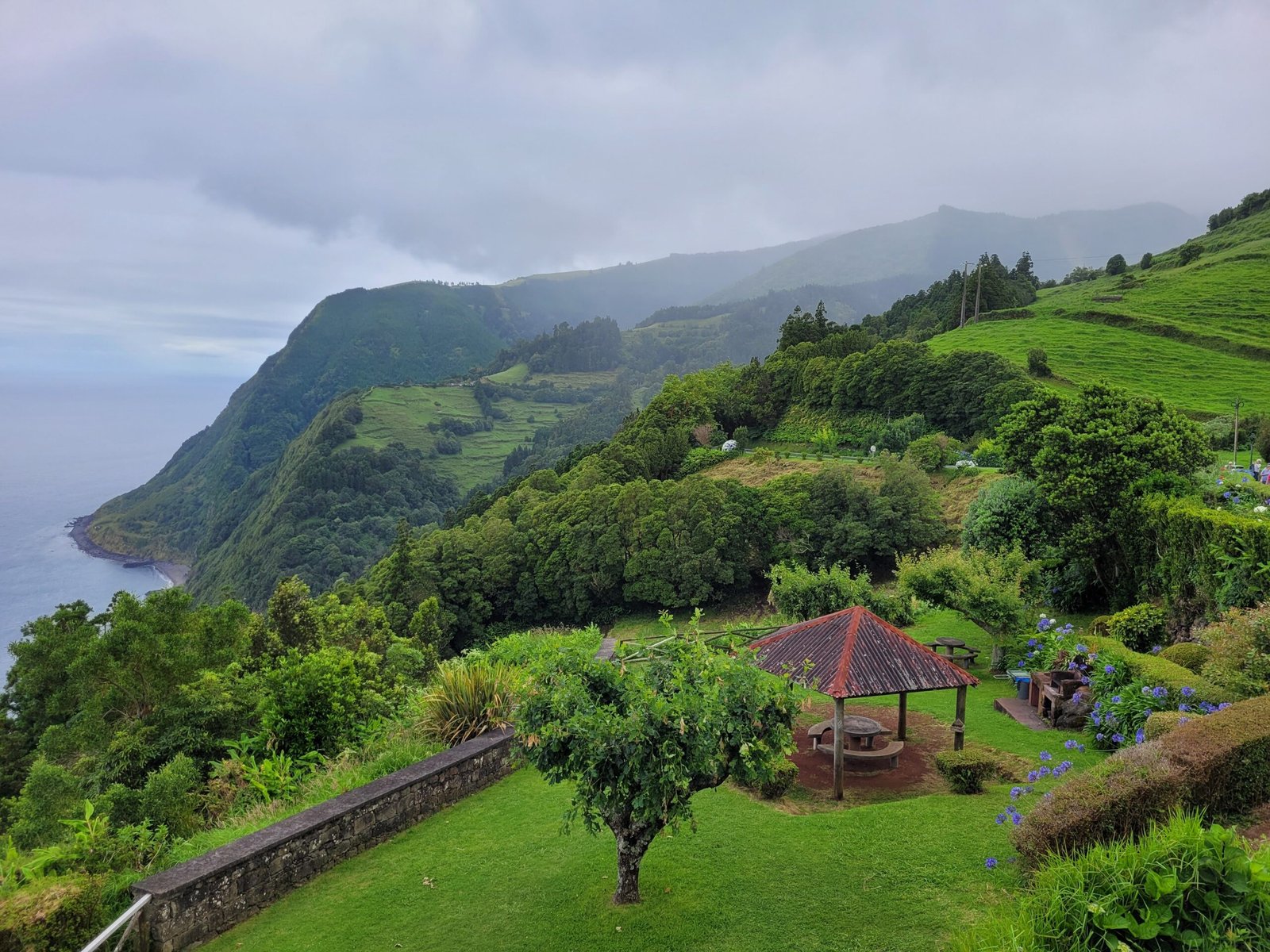
Miradouro do Sossego
Povoação’s Crater, History, and Celebrities
As we reached a viewpoint close to Povoação, a city in the southeastern corner of the island, a dense fog enveloped us, limiting our visibility. However, the guide took this opportunity to entertain us with more tales of the island’s history. Povoação, nestled in a crater open to the ocean, holds a significant place in the history of the Azores as the first settlement on the island. Povoação was founded in 1432 by settlers who arrived from Portugal, led by Gonçalo Velho Cabral. The settlers chose this area due to its natural harbor and fertile land. The city, surrounded by lush greenery and boasting the oldest church on the island, Santa Barbara, offered a glimpse into Sao Miguel’s rich past. However, Povoação experienced challenges throughout its history. It was severely affected by earthquakes in 1522 and 1630, which caused significant damage to the town and its structures. However, the city was rebuilt and continued to thrive.
We learned that Povoação was a place of great significance, and its charm extended even to famous personalities like Gordon Ramsay. Though, time seems to stand still in this town, allowing one to appreciate the raw beauty of nature and the deep-rooted cultural heritage. The cobblestone streets in the city center led us to quaint little cafes and local restaurants. It is no wonder why Povoação’s rich history, nature, and culture make it a captivating destination for those seeking to delve into the island’s past and experience its unique culture.
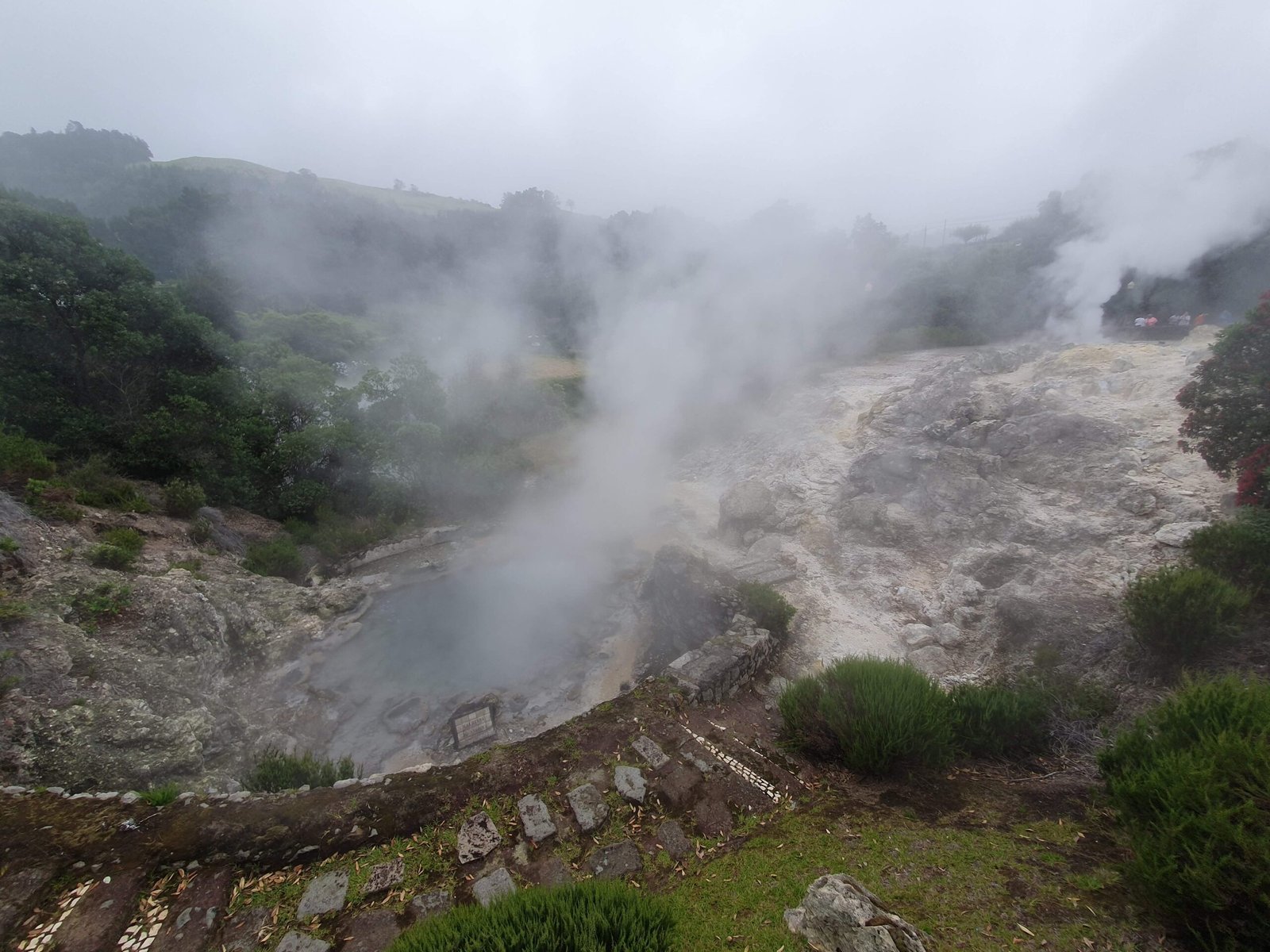
Volcanic Legacy
Furnas’ Volcanic Legacy
Our journey wound its way through the curvy roads, passing the lake of Furnas and the hot springs. We learnt that the last eruption was in 1630. Toxic gases and magma were released, resulting in the loss of lives and devastation in the surrounding area. Since then, the volcano has remained dormant, but it is still considered an active volcano. The volcanic activity of Furnas is however evident through the presence of hot springs and geothermal waters in the area. The geothermal energy generated by the volcano’s activity is harnessed and utilized for various purposes, including heating and cooking of the famous Furnas cozido, a traditional dish cooked using the natural steam and heat from the volcanic activity. Taking a short break in Furnas, we explored the hotsprings, while the aroma of sulfur tantalized our senses.
The charming coastal town of Villa Franca do Campo
Our final stop brought us to Villa Franca do Campo, holding a historical significance as the original capital of the Azores until a devastating earthquake in 1522. The city welcomed us with vibrant decorations in the streets in preparation for the upcoming Saint São João (St. John) festivities. The celebrations start in late June and feature lively street parties, parades, music, food, dance and fireworks. We marveled at the picturesque island off its shore, a popular spot for Red Bull diving.
Ilhéu da Vila
The town is known also for its picturesque harbor, which features a small islet: Ilhéu da Vila. This islet is a protected nature reserve and a popular destination due to its perfect shapes. The islet is formed from the remnants of an ancient underwater volcano, giving it a distinctive circular shape with a collapsed central cone. The resulting formation created a natural lagoon in the center, known as “Lagoa do Ilhéu da Vila.” The lagoon is connected to the ocean through a narrow channel, creating a natural swimming pool that fills up with seawater during high tide and makes is a secluded and tranquil place for swimming and snorkelling. We admired it from the coast of Villa Franca do Campo and it was the perfect ending of our exploration of the east part of São Miguel.
As we returned to Ponta Delgada, our minds were buzzing with the day’s breathtaking views and history. We dropped off our belongings at the hotel and embarked on a mission to collect souvenirs. With anticipation in our hearts, we prayed for good weather for the long day of hiking that awaited us on our last day on the island.

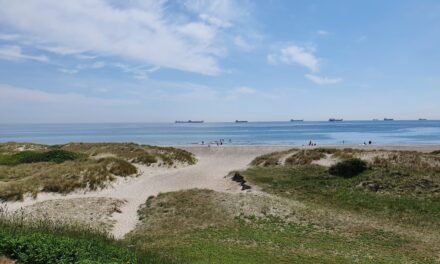



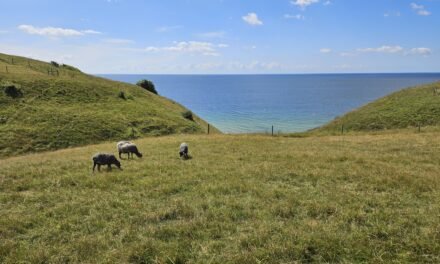
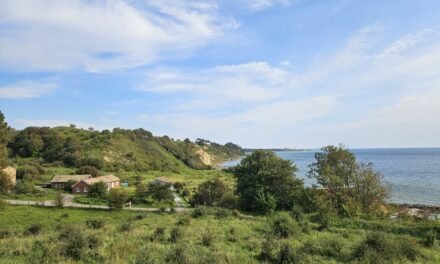
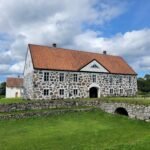

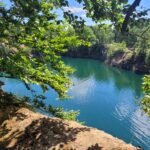
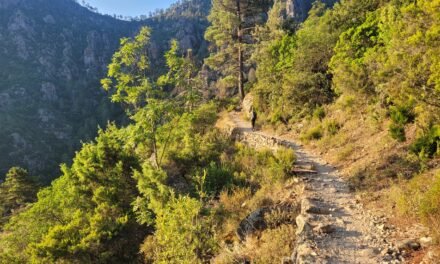
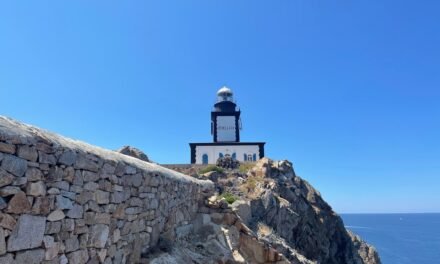
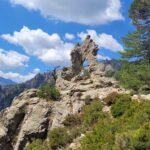
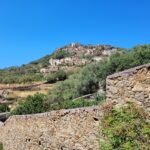
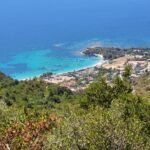
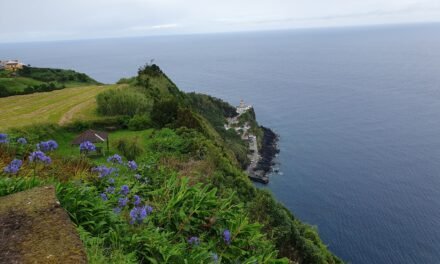
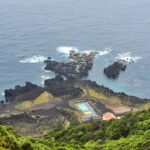
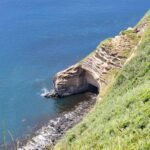
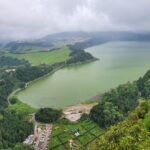
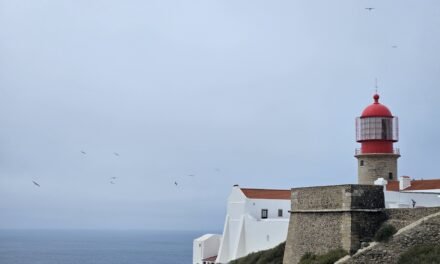
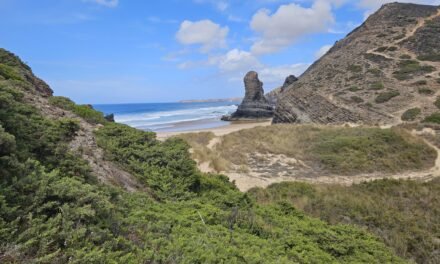
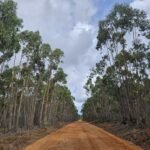
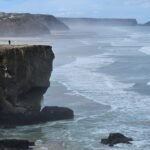
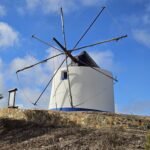









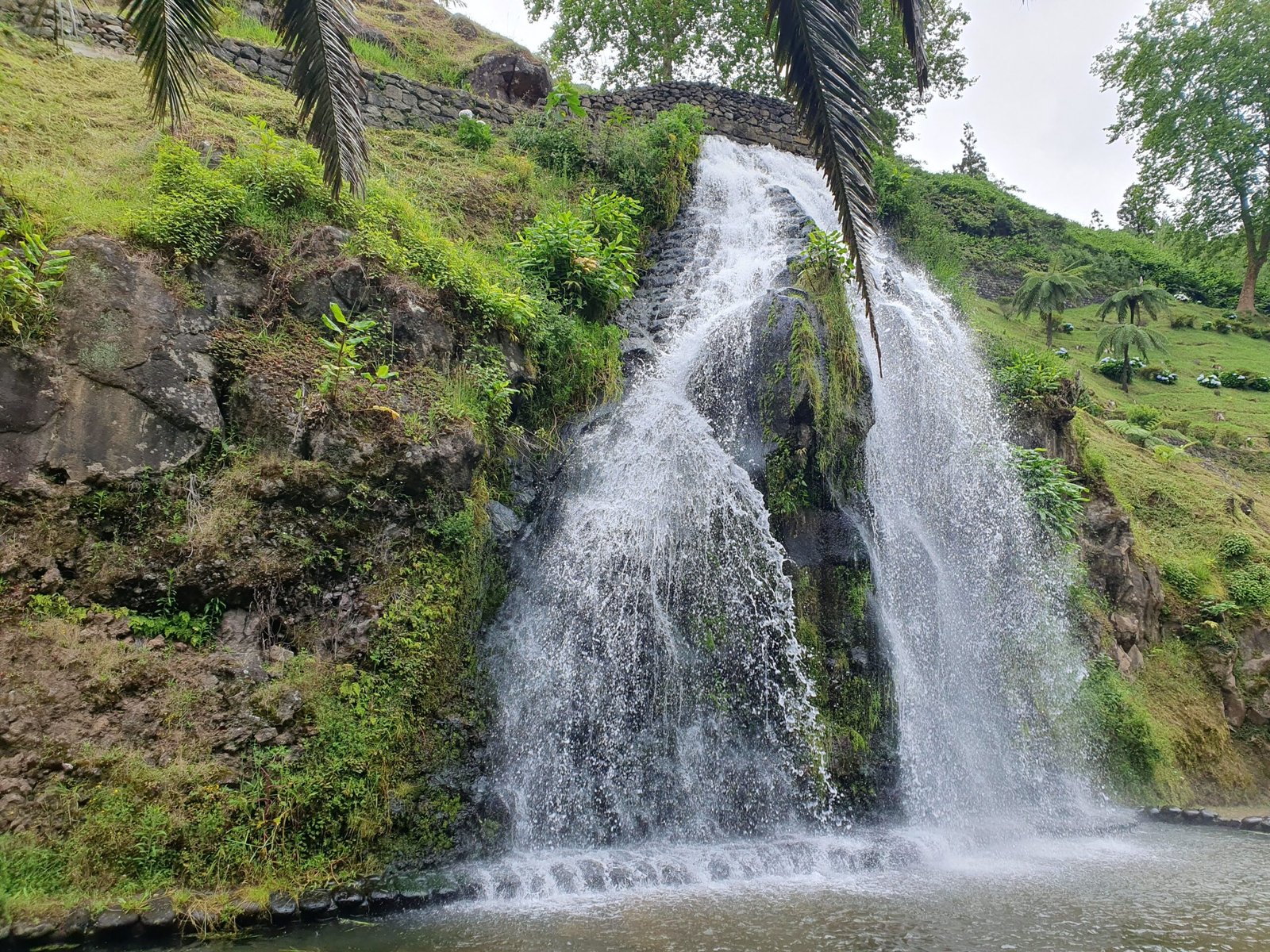
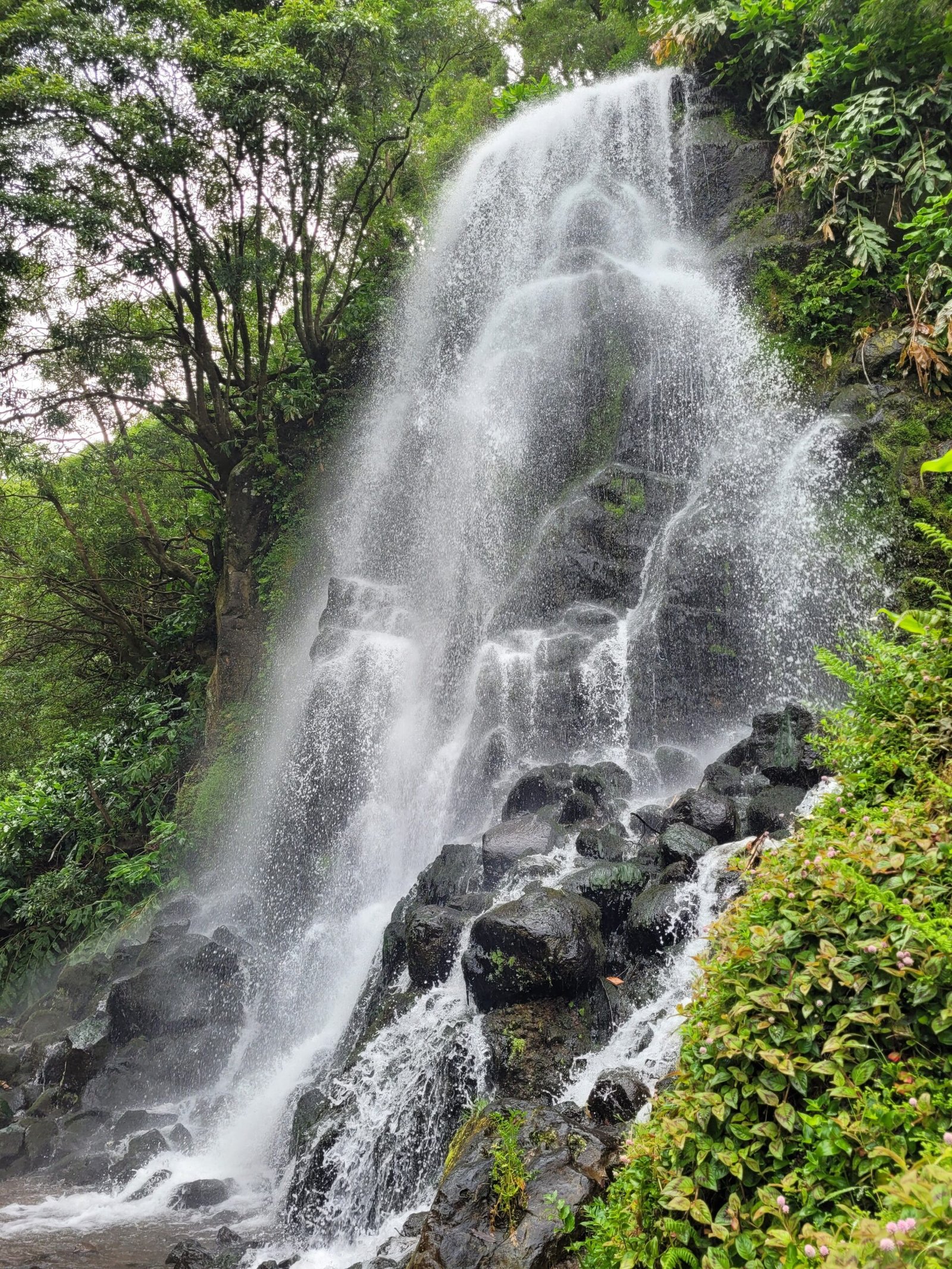
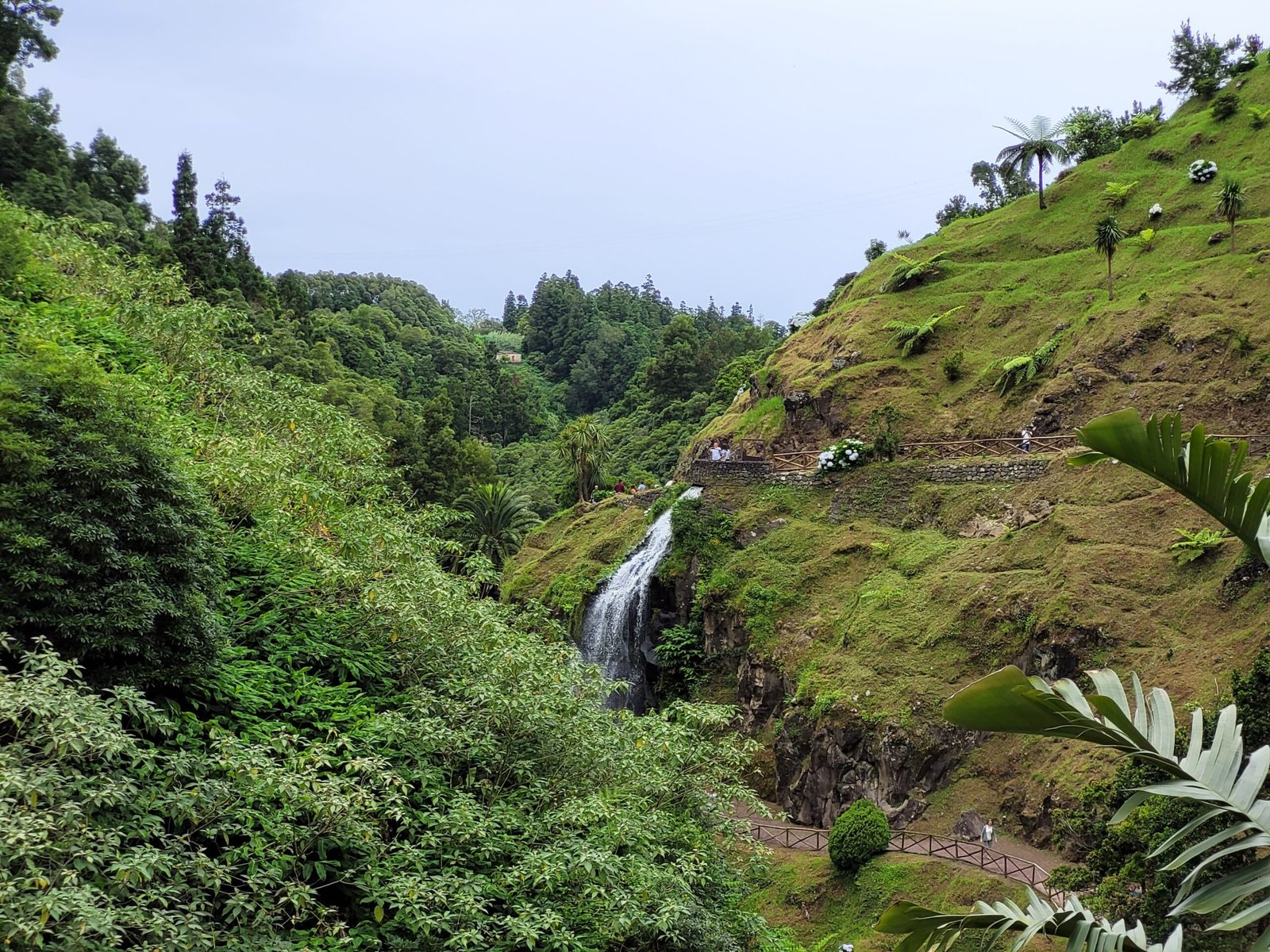
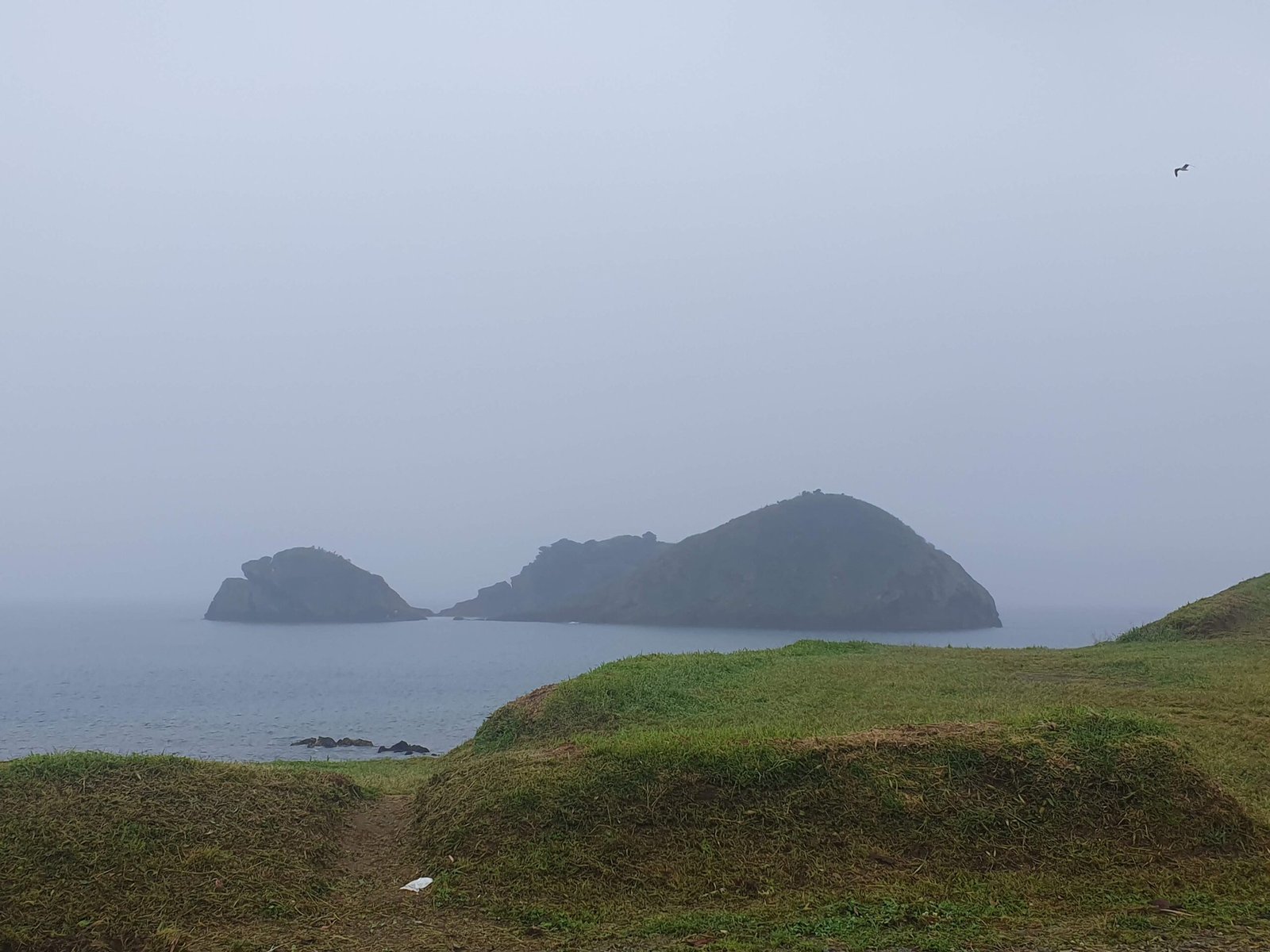

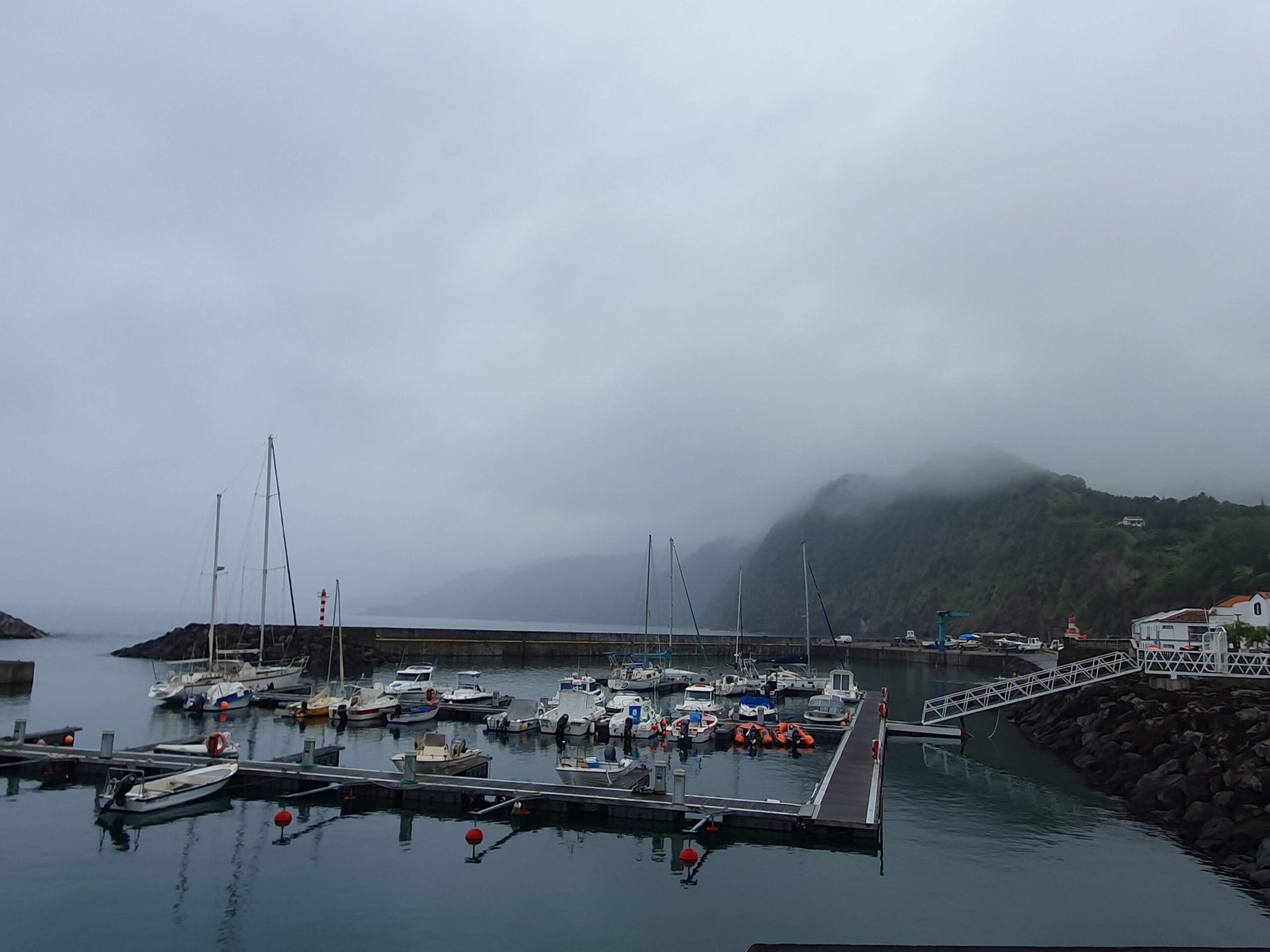
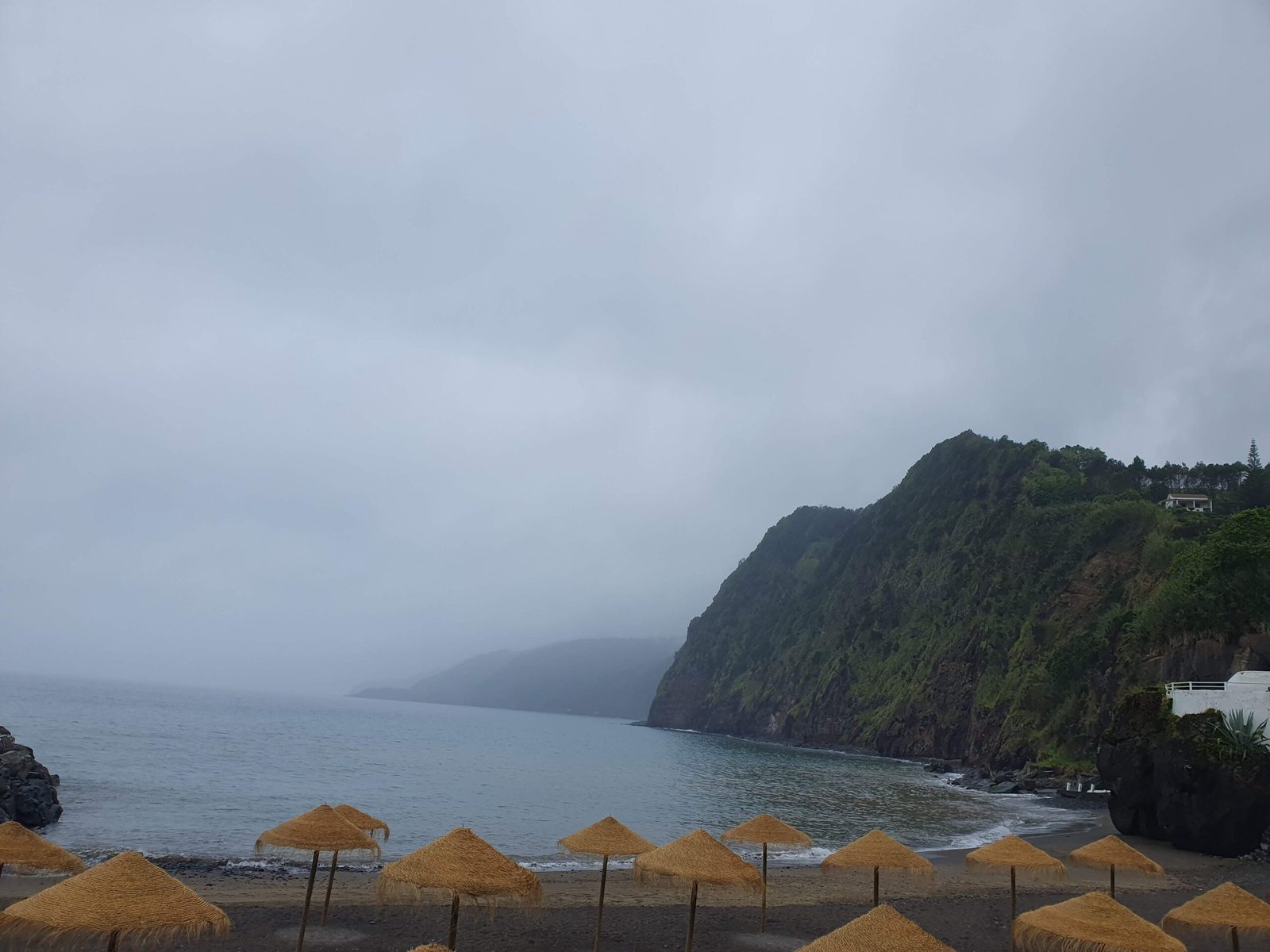
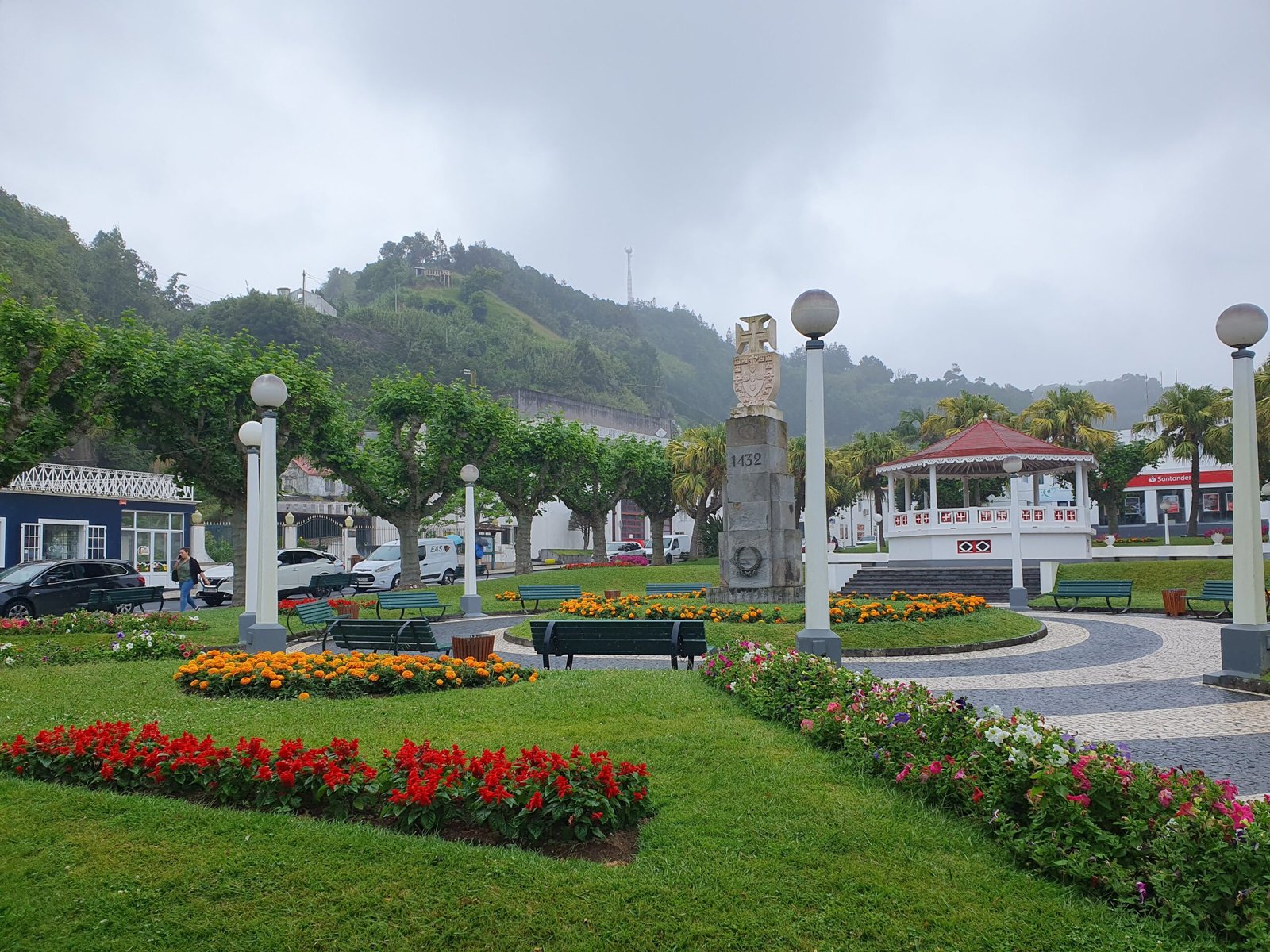
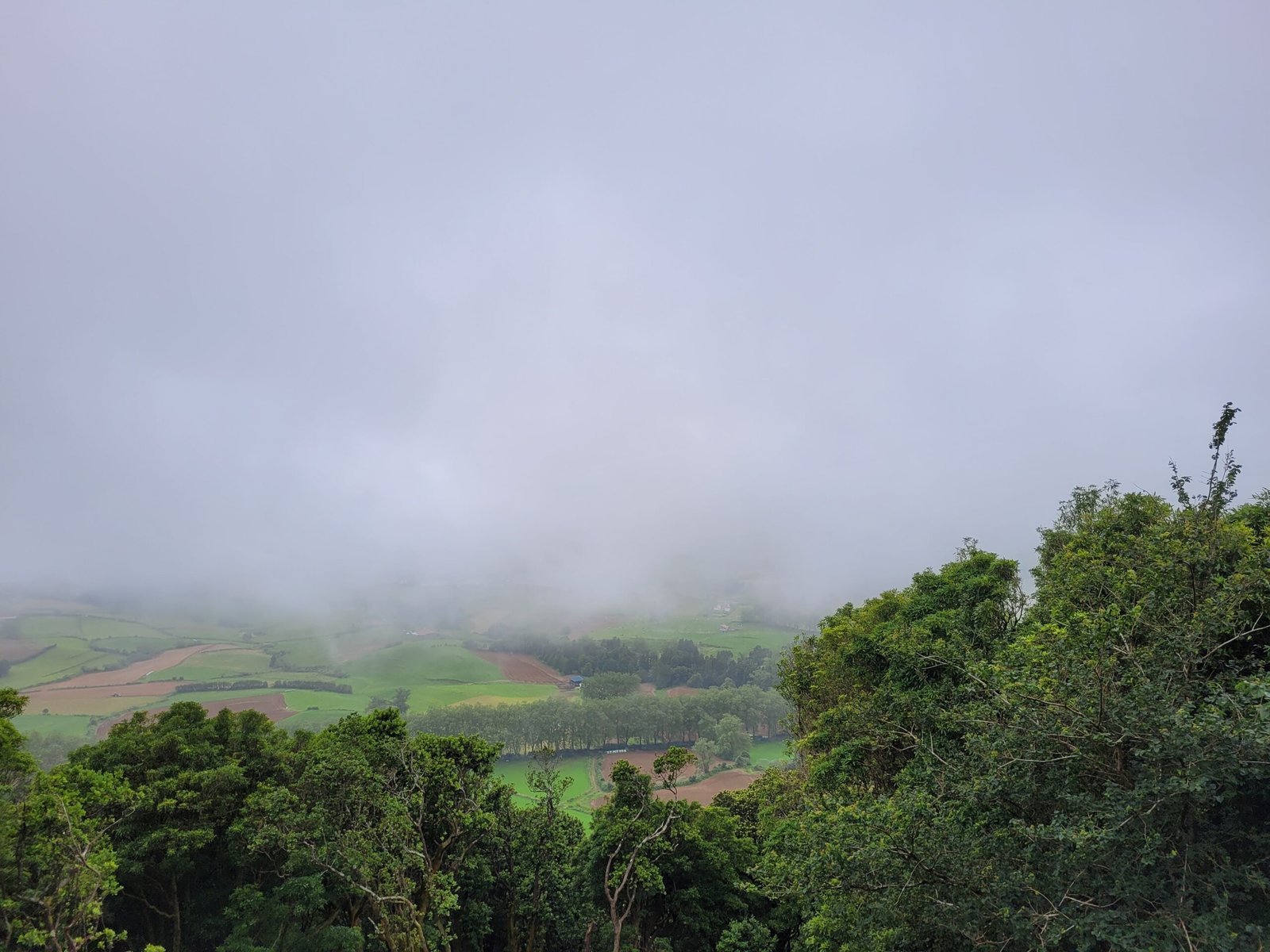
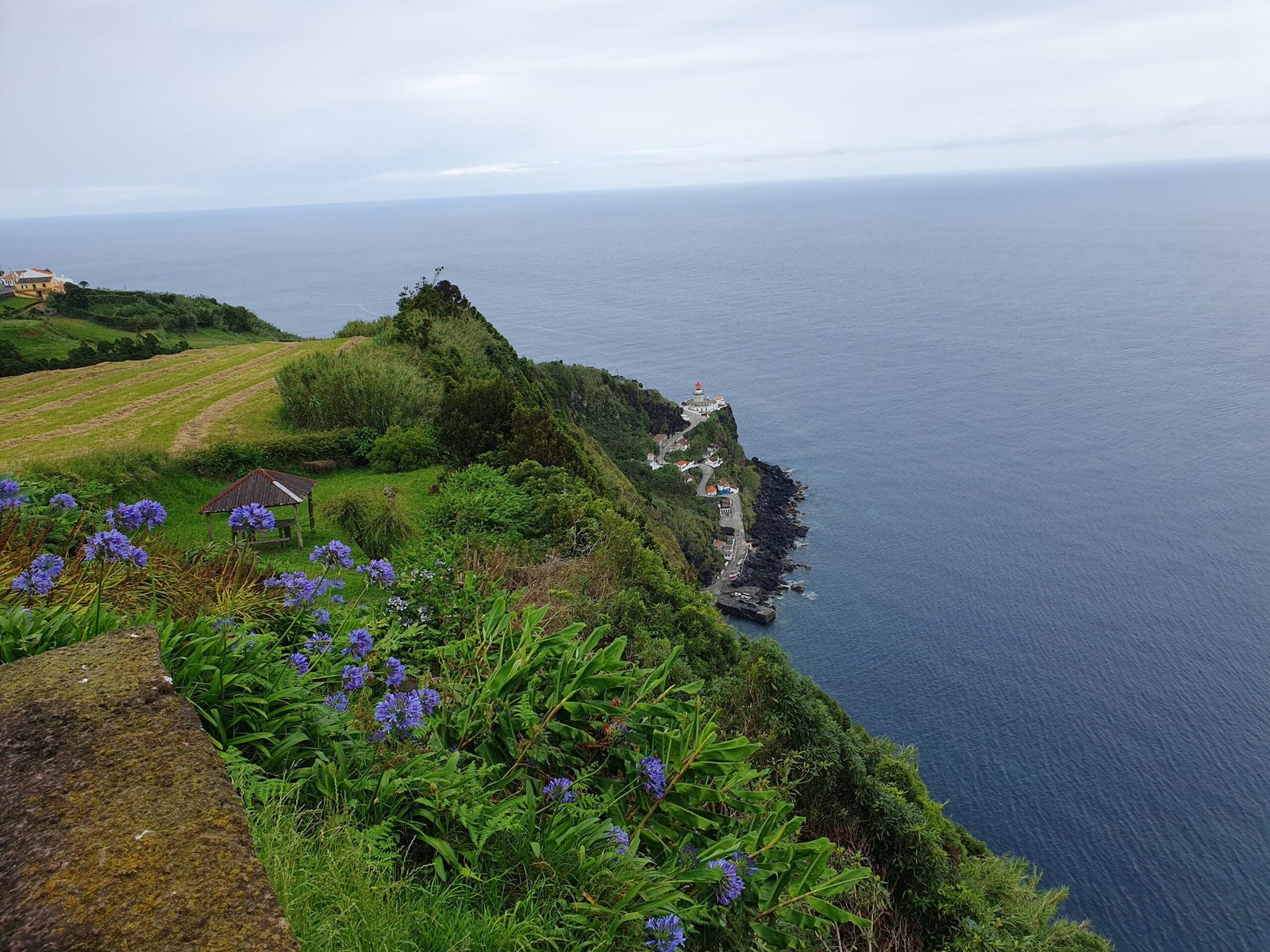
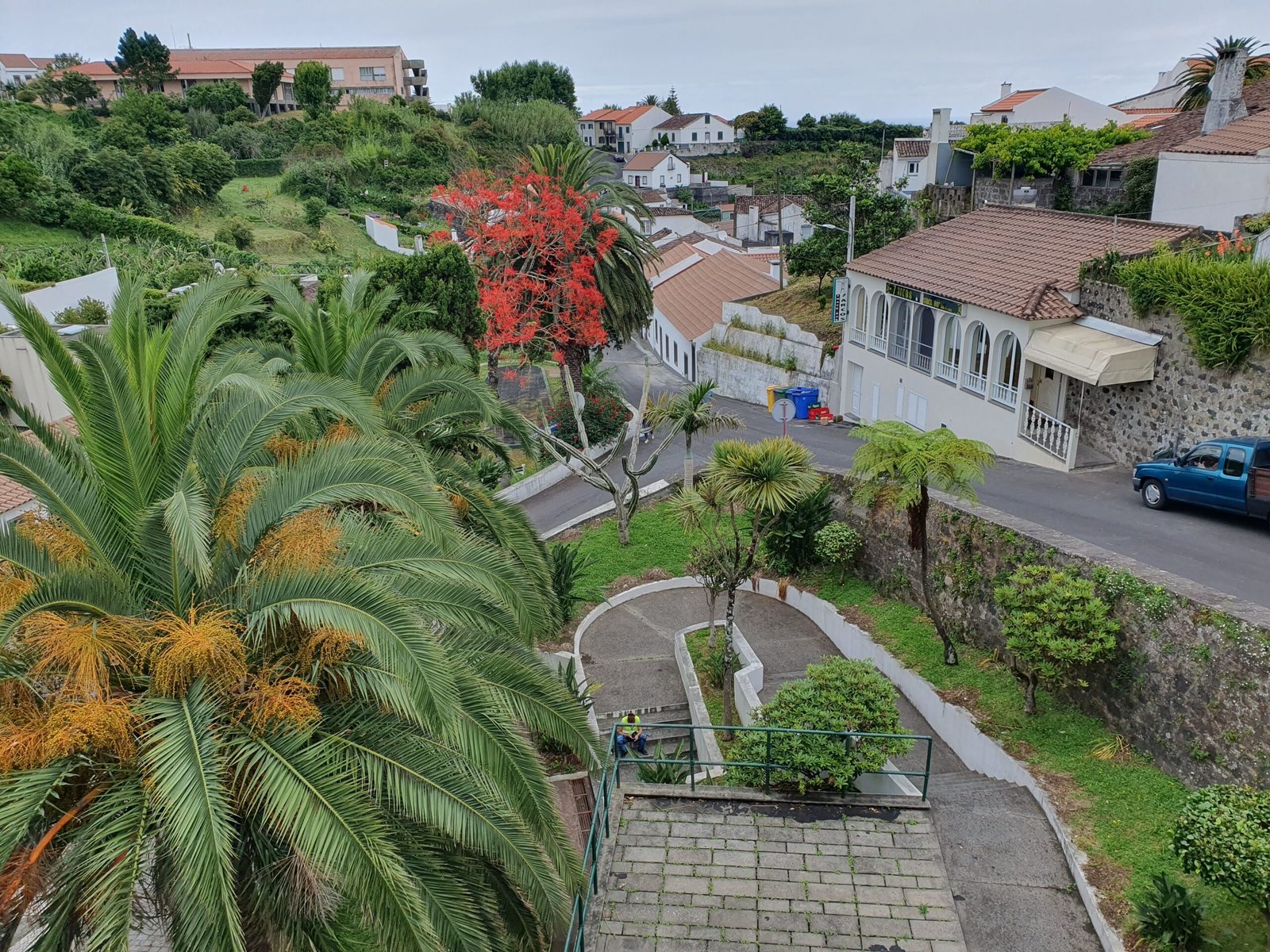
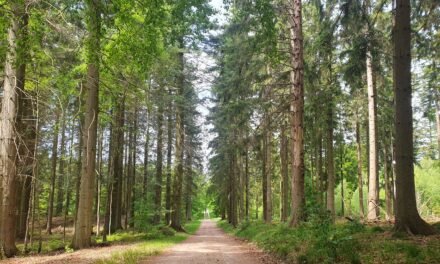

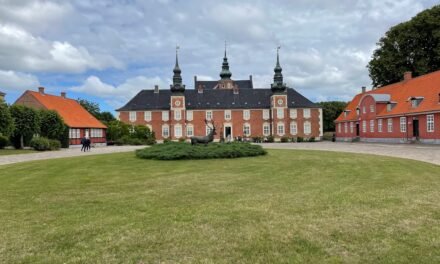

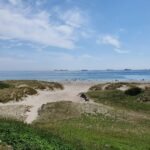

0 Comments